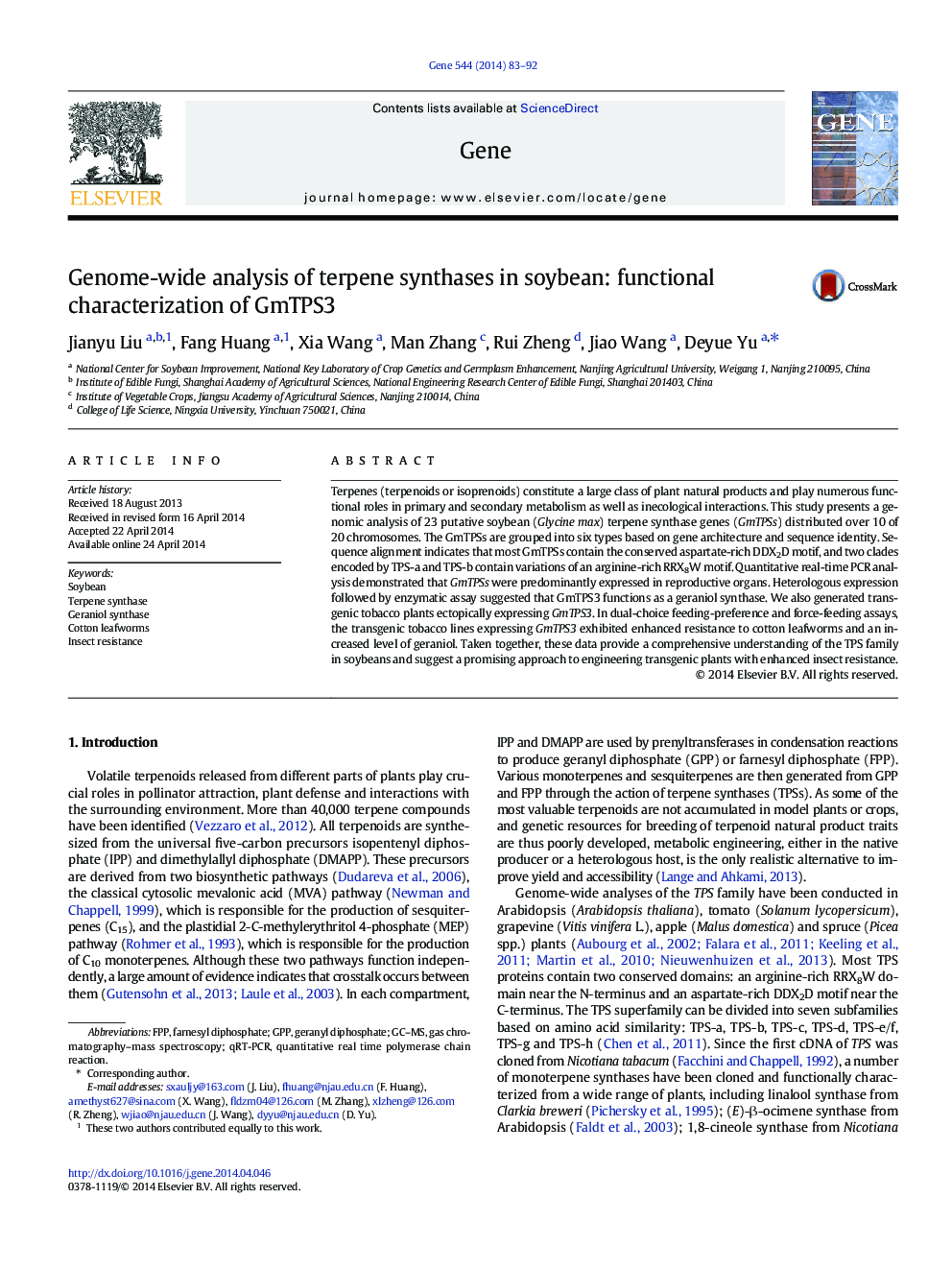| Article ID | Journal | Published Year | Pages | File Type |
|---|---|---|---|---|
| 2816337 | Gene | 2014 | 10 Pages |
•This study presents a genomic analysis of 23 putative GmTPS.•GmTPSs were predominantly expressed in reproductive organs.•Heterologous expression suggested that GmTPS3 functions as a geraniol synthase.•Transgenic tobacco plants expressing GmTPS3 enhanced resistance to cotton leafworms.
Terpenes (terpenoids or isoprenoids) constitute a large class of plant natural products and play numerous functional roles in primary and secondary metabolism as well as inecological interactions. This study presents a genomic analysis of 23 putative soybean (Glycine max) terpene synthase genes (GmTPSs) distributed over 10 of 20 chromosomes. The GmTPSs are grouped into six types based on gene architecture and sequence identity. Sequence alignment indicates that most GmTPSs contain the conserved aspartate-rich DDX2D motif, and two clades encoded by TPS-a and TPS-b contain variations of an arginine-rich RRX8W motif. Quantitative real-time PCR analysis demonstrated that GmTPSs were predominantly expressed in reproductive organs. Heterologous expression followed by enzymatic assay suggested that GmTPS3 functions as a geraniol synthase. We also generated transgenic tobacco plants ectopically expressing GmTPS3. In dual-choice feeding-preference and force-feeding assays, the transgenic tobacco lines expressing GmTPS3 exhibited enhanced resistance to cotton leafworms and an increased level of geraniol. Taken together, these data provide a comprehensive understanding of the TPS family in soybeans and suggest a promising approach to engineering transgenic plants with enhanced insect resistance.
